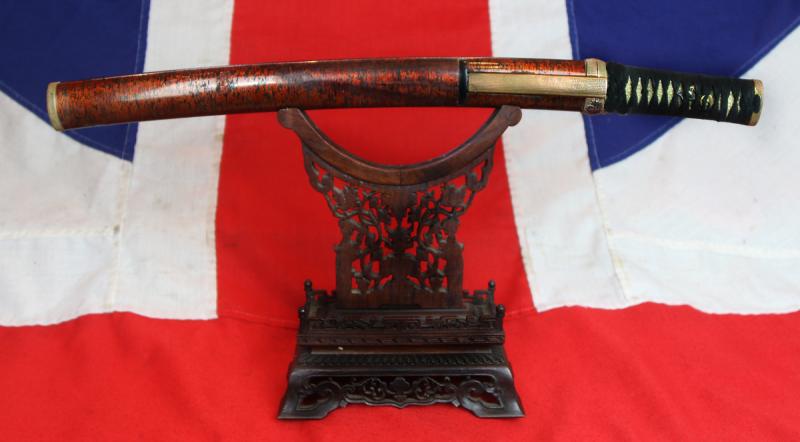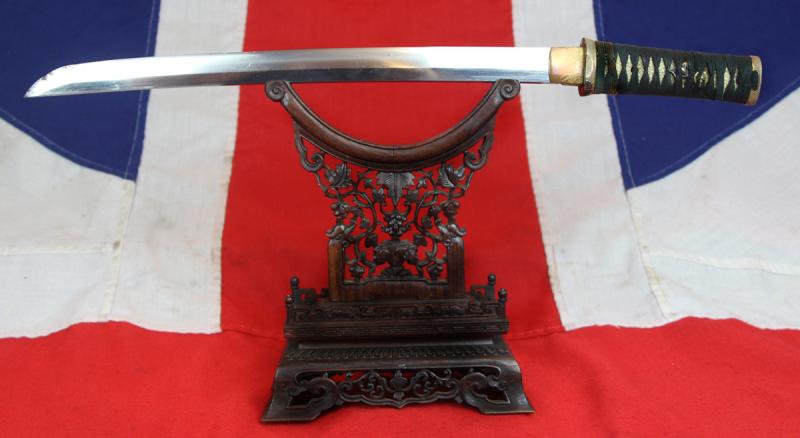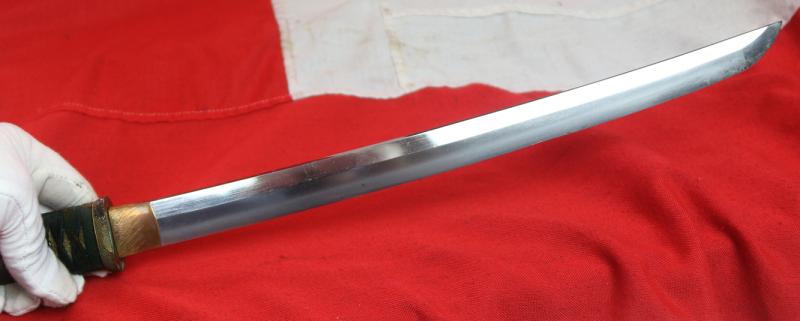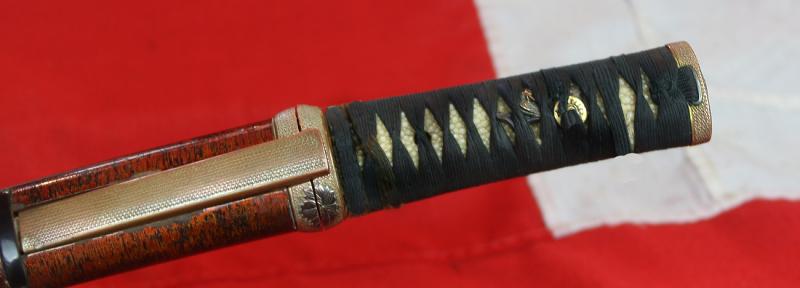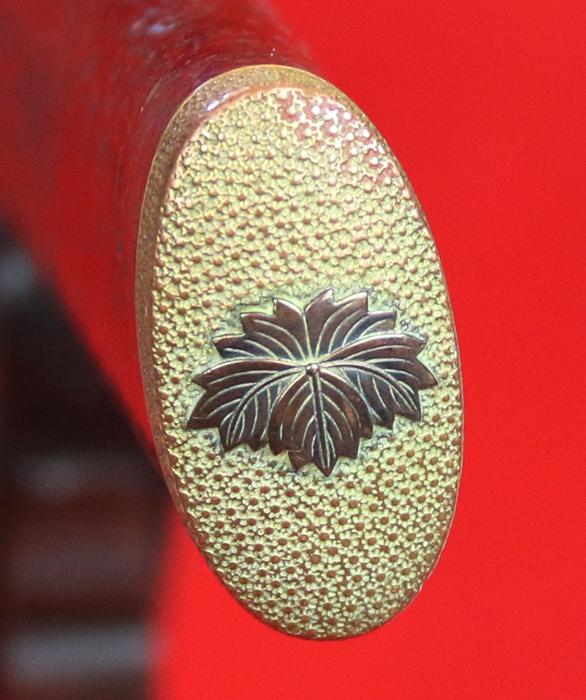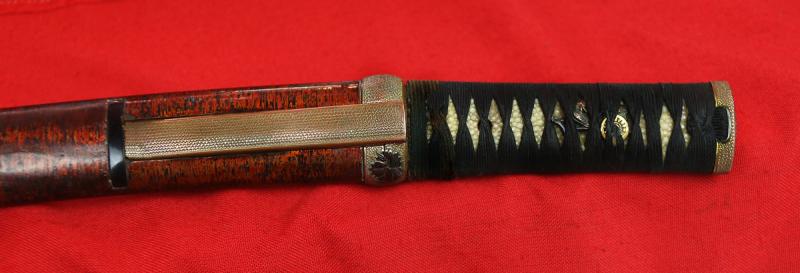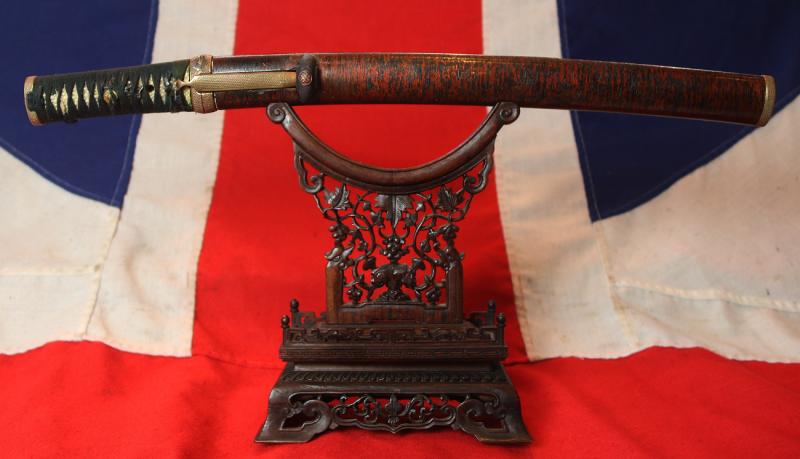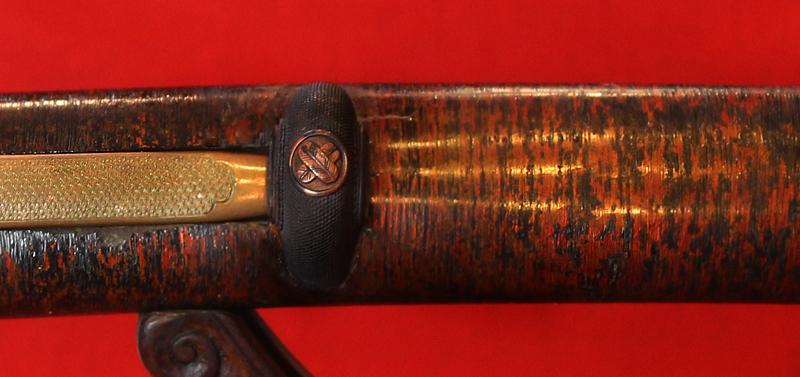An Absolutely Beautiful Edo Period Long Aikuchi Shinto Sunobi Tanto with the Clan Mon of The Asano Clan, Around 400 years Old
And another clan kamon somewhat based on the Kawari Kiri Kuzushi. Fully matching suite of copper gilt koshirae, including a pair of kozuka and kogai, all decorated throughout with the clan mon of the Kawari Kiri Kuzushi, and a kurigata is top mounted with the kamon of the crossed hawkfeathers, the taka no ha of the Asano clan, famed clan of the 47 Ronin.
It has a pair of menuki, in shakudo and pure gold of a wheeled hand cart and a cormorant. It has a simply stunning blade with original Edo polish in around 95% full polish condition.
The saya has a hammered paper thin pure gold flake layer underneath urushi lacquer, overdecorated with vermillion tinted clear urushi lacquer, then a fine black urushi lacquer on top sporadically stripe lined to simulate the overall appearance of cherry bark, with two narrow lines of early edo period lacquer restoration by the kozuka pocket.
The 'taka no ha' hawkfeather mon of Asano Naganori, who was the daimyo of the Ako Domain in Japan (1675 - 1701). His title was Takumi no Kami. He is known as the person who triggered a series of incidents retold in a story known as Chushingura, or the 47 Ronin, one of the favourite themes of kabuki, joruri, and Japanese books and films. Described by Japanese historians as a "National Legend", the revenge of the 47 Ronin took place in Japan and is the ultimate expression of the samurai code of honour, Bushido. Japanese lacquer, or urushi, is a transformative and highly prized material that has been refined for over 7000 years.
Cherished for its infinite versatility, urushi is a distinctive art form that has spread across all facets of Japanese culture from the tea ceremony to the saya scabbards of samurai swords
Japanese artists created their own style and perfected the art of decorated lacquerware during the 8th century. Japanese lacquer skills reached its peak as early as the twelfth century, at the end of the Heian period (794-1185). This skill was passed on from father to son and from master to apprentice.
Some provinces of Japan were famous for their contribution to this art: the province of Edo (later Tokyo), for example, produced the most beautiful lacquered pieces from the 17th to the 18th centuries. Lords and shoguns privately employed lacquerers to produce decorated samurai sword saya and also ceremonial and decorative objects for their homes and palaces.
O-Tanto or Sunobi Tanto
The Tanto that varied from the traditional size were called Sunobi-Tanto or O-Tanto. These were larger versions of the Tanto which featured blades usually measuring between 13 to 14 inches long. It was close to the size of the Ko-Wakizashi, which is a shorter version of the Wakizashi. However as this blade is even longer that the usual 14 inches, that is why it can be considered as a transitional weapon that has a foot in both camps so to speak. Because of its often small size, the Samurai warriors were able to conceal the Tanto in their clothing. It was also the Shoto or small sword in the Daisho and was paired with the Tachi. This was before the Samurai chose to use the Wakizashi over the Tanto as an auxiliary sword.
The Wakizashi was a Samurai warrior’s backup weapon that was used for close-quarter battles. Aside from this, the sword was a Samurai warrior’s tool for beheading a defeated opponent. It was sometimes used for committing Seppuku, a ritualistic suicide.
20.5 inches long overall, blade tsuba to tip, 15 inches long.
Original blue green silk ito that is very aged and we should rebind this ideally, the blade bears some staining at the tip end, this could be polished out.
Code: 24316
6450.00 GBP

